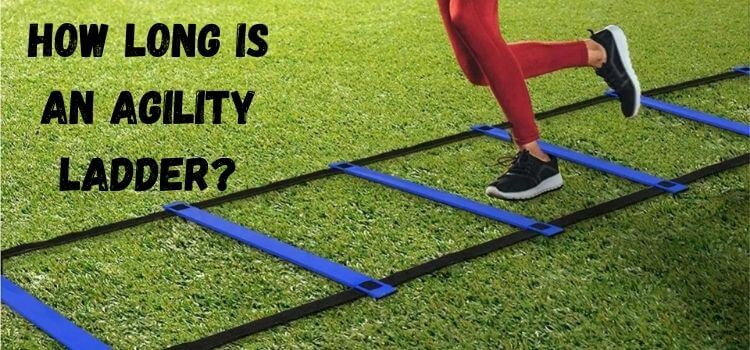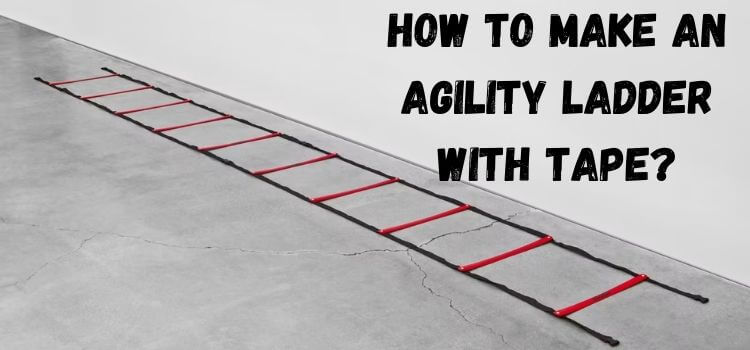As an Amazon Associate, I earn from qualifying purchases
Are agility ladders worth the hype, or are they another fitness fad? If you’ve ever wondered, “Do agility ladders work?” you’re not alone. These ladder-like training tools have gained popularity in various fitness circles in recent years, promising to enhance agility, speed, and overall athletic performance.
But before you incorporate them into your training routine, it’s crucial to understand their effectiveness, benefits, and potential drawbacks. Let’s explore the science behind agility ladders and whether they live up to their promises.

Introduction of Agility Ladders
Agility ladders, speed ladders, or footwork ladders are portable training tools with rungs or steps on the ground. They enable rapid and accurate footwork patterns to improve agility, balance, and proprioception.
While their origins trace back to military training, agility ladders have gained widespread popularity in sports and fitness settings.
Understanding Agility Training
The capacity to alter course quickly and effectively without losing balance or control is known as agility. Agility is crucial in sports like soccer, basketball, soccer, and tennis, as it can determine a player’s success or failure.
Agility training aims to improve these skills through various exercises, including ladder drills, cone drills, and plyometrics.
How Do Agility Ladders Work?
Agility ladder drills typically involve performing various footwork patterns through and around the ladder rungs.
These drills challenge coordination, reaction time, and neuromuscular control, helping athletes develop sharper movements and quicker transitions on the field or court.
By repeatedly practising specific movement patterns, athletes can enhance their muscle memory and motor skills, improving performance.
Scientific Evidence Supporting Agility Ladder Effectiveness
Numerous studies have demonstrated the effectiveness of agility ladder training in enhancing athletic performance.
According to research published in the Journal of Strength and Conditioning Research, agility ladder drills in a collegiate soccer player’s training regimen significantly increased the player’s speed, agility, and lower body power.
Agility Ladder Drills for Different Sports
It is possible to modify agility ladder drills to meet the specific requirements of various soccer sports.
In contrast to basketball players, who may emphasize vertical agility and explosiveness, soccer players might concentrate on developing their lateral quickness and change of direction.
Soccer players often incorporate agility ladder drills to enhance footwork and agility in tight spaces.
Tips for Effective Agility Ladder Training
Strict form and technique are necessary to get the most out of agility ladder exercises. Athletes should maintain a slight forward lean, keep their knees bent, and stay light on their feet.
Additionally, progressively increasing the complexity and intensity of ladder drills can help prevent plateaus and promote continuous improvement.
Common Misconceptions About Agility Ladder Training
Despite its widespread popularity, agility ladder training is not without its myths and misconceptions. One common myth is that agility ladders are only beneficial for elite athletes.
Agility ladder drills benefit people of all fitness levels because they can be adjusted to accommodate various skill levels and capacities.
Real-World Success Stories
Countless athletes have attested to the effectiveness of agility ladder training in enhancing their performance on the field or court.
From professional athletes to weekend warriors, incorporating agility ladder drills into their training routines has helped them achieve new levels of speed, agility, and overall athleticism.
Conclusion
In conclusion, agility ladders are valuable for improving agility, speed, and coordination. Whether you’re a competitive athlete looking to gain an edge or a fitness enthusiast striving to enhance your overall athleticism, incorporating agility ladder drills into your training regimen can yield significant benefits.
The question “Do agility ladders work?” has been thoroughly examined, and the evidence suggests that they can be practical tools for improving agility, speed, and coordination.
Frequently Asked Questions (FAQs)
Agility ladders are helpful for people of all ages and fitness levels, even though athletes use them frequently.
Agility ladder training can help with weight loss goals when paired with other forms of exercise and a balanced diet, even if its primary focus is improving agility and athletic performance.
The frequency of agility ladder training can vary depending on individual goals and fitness levels. However, incorporating ladder drills 2-3 times per week alongside other forms of exercise can yield noticeable improvements in agility and coordination over time.
Agility ladder training can be customized to fulfil the needs of people of all ages, considering differences in physical capabilities and fitness levels.
While agility ladder drills primarily focus on physical performance, the cognitive demands of executing complex footwork patterns may indirectly contribute to improved mental function and neuroplasticity over time.
Read Our More Articles
- How Long is an Agility Ladder? A Comprehensive Overview
- How to Make an Agility Ladder with Tape: A Comprehensive Tutorial
- How to Untangle Agility Ladder: Quick Tips for Easy Setup
As an Amazon Associate, I earn from qualifying purchases


